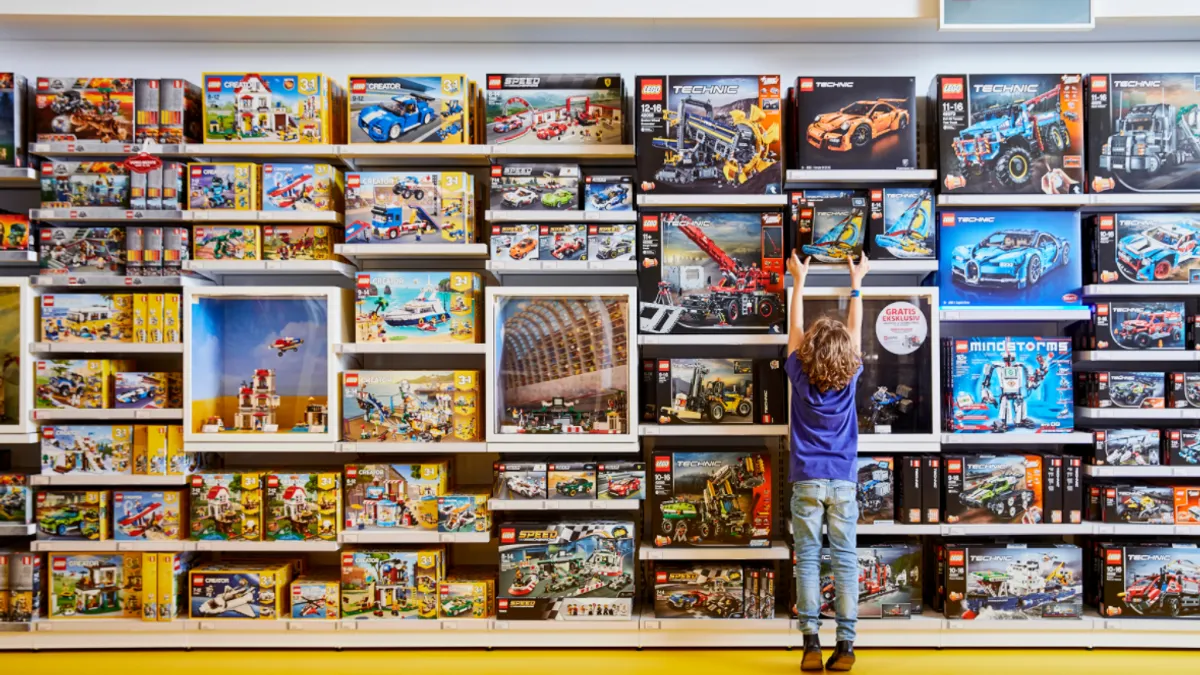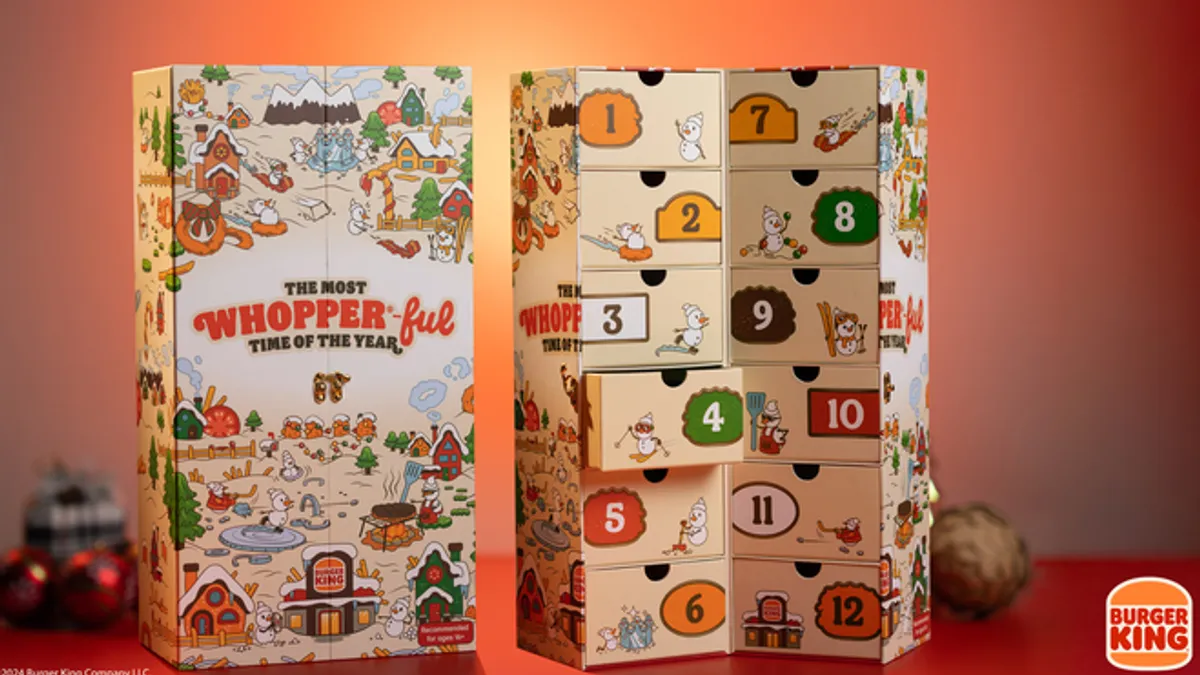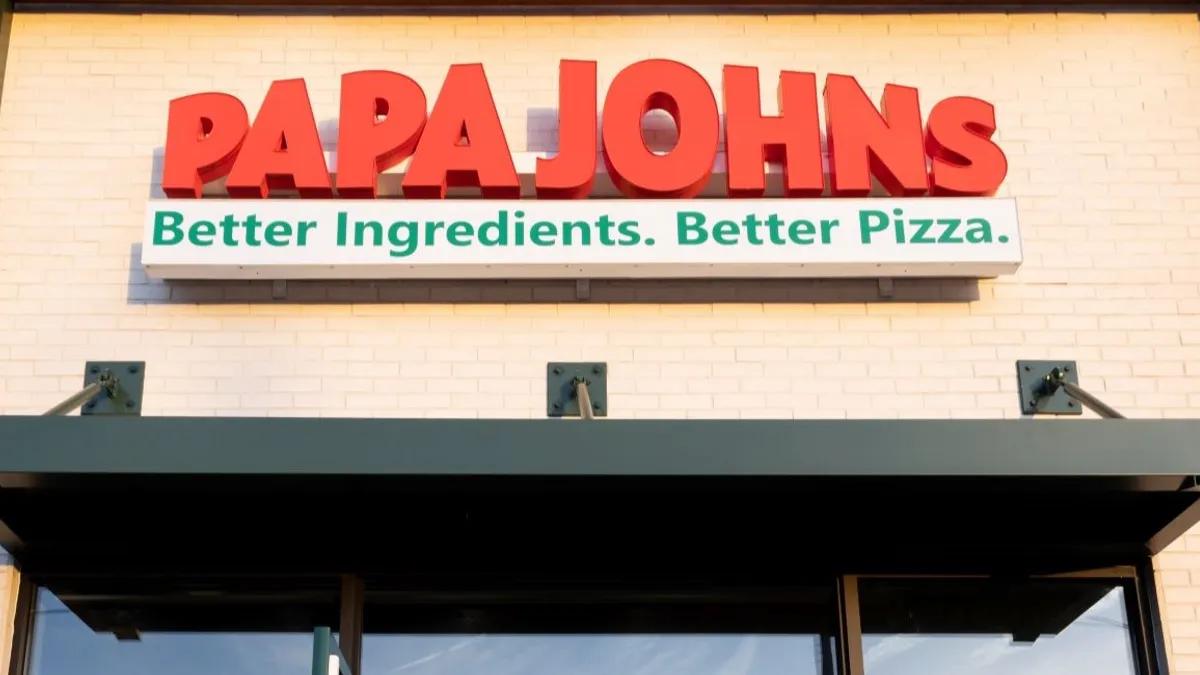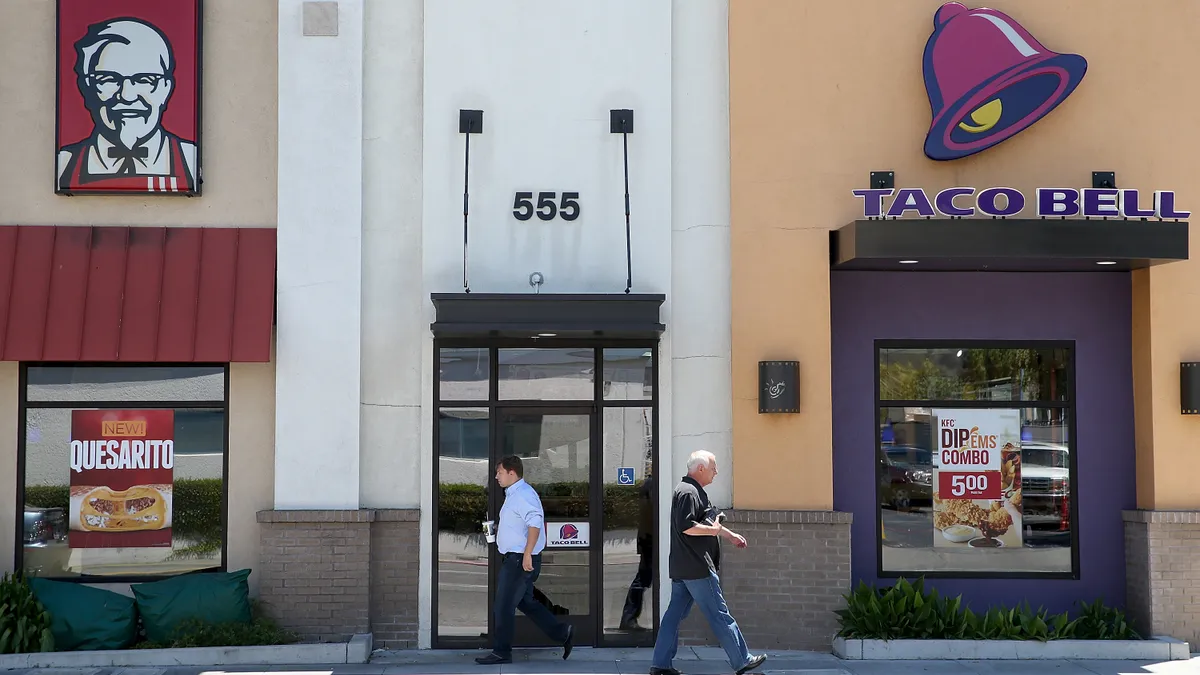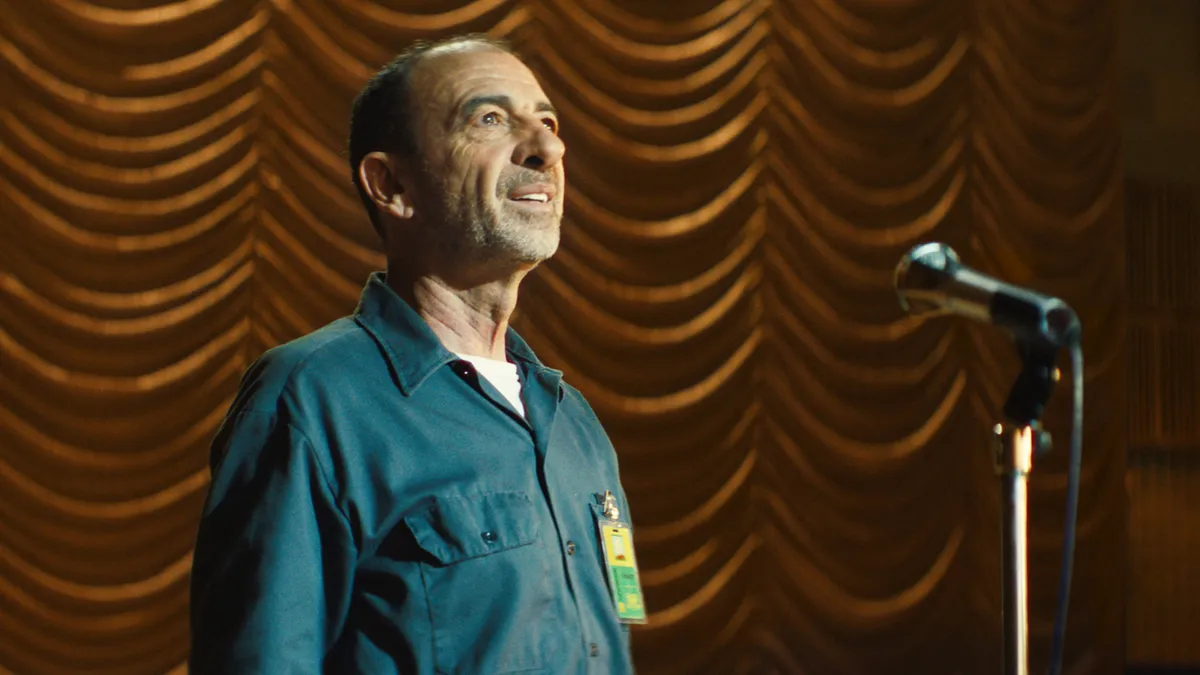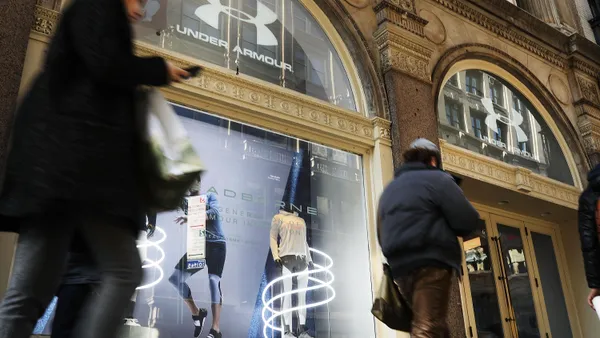Mention Lego and most people have a story to tell.
They used to play with Lego when they were kids. They just bought a set. (Did you know they have a typewriter design? People love to talk about the typewriter.) They have a friend who is a collector. The pain of stepping on one in bare feet has become a rite of passage for parenthood.
Lego is ubiquitous. And the company is showing no signs of slowing down.
Earlier this month the retailer reported that 2021 sales came in at over $8 billion. It opened 165 stores last year and is in the middle of expansion in China. Even as the world was in the throes of COVID-19, consumer sales jumped 21% in 2020, outpacing the industry's growth that year.
Lego also strategically partners with other retailers and helped to create an aisle in the toy section of box retail stores, according to James Zahn, deputy editor of "The Toy Book."
An example of this was in Q4 of last year when Target announced a partnership with the toy company for the holiday season. "Our guests love Lego brick sets," Jill Sando, executive vice president and chief merchandising officer at Target, said in a statement at the time. "In fact, Target is one of the leading destinations for families when shopping for the brand."
This year, as the company celebrates its 90th anniversary, Lego is dominating the toy industry as it follows its mission to "be a global force for learning through play."
But, the company's trajectory hasn't always been smooth. Lego nearly crashed and burned before it decided to bank on a very popular movie franchise in the late '90s. Now, it leverages pop culture IP and has proven not only to be a brand for kids, but also for adults. A dedicated community has sprung up, with collectors and a vibrant (and sometimes lucrative) secondary market.
"Every once in awhile you still run across the random person that wants to fall back on the old, 'Oh kids don't play with toys anymore, they just want to play on their iPad.' And that's so completely wrong," Zahn said. "The U.S. toy industry is doing more dollars than it's ever done before."
And Lego is leading the way.
Lego: A brief history
Lego Group, which was founded in 1932 by Ole Kirk Kristiansen, is still a family company and is currently owned by Kjeld Kirk Kristiansen, one of the founder's grandchildren.
The Lego name is an abbreviation of two Danish words — leg godt — which means "play well." The business first produced wooden toys, but by 1949 began producing plastic bricks under the name Automatic Binding Bricks.
In 1953 that name was removed from the product and it was renamed "Lego Mursten" or "Lego Bricks." In 1958, the brick was patented and launched in its present form. The decades following would find the introduction of Lego building instructions, a theme park, the creation of large bricks for young children, licensing deals and retail store openings.
But the biggest crossroads in the company's timeline is arguably 1999. This is the year that changed the trajectory of the company — and it's all due to the relaunch of one of the most popular franchises on the planet.
"Even if you look at Lego's official timeline on the Lego corporate website, 1990 to 1999 is almost blank," Zahn said. "They had really just sort of become complacent as a company," Zahn said of the time period, pointing to the company's System in Play.
The system, first introduced in the mid-1950s and still recognized as a cornerstone of the company, means that all elements fit together, can be used in multiple ways and can be utilized to build things. But, reliance on it meant the company wasn't innovating, according to Zahn. "In the toy business, if you don't innovate, you go stagnant. And eventually your sales just fall off a cliff."
"Now pretty much everything pop culture you can find it in brick form."

James Zahn
Deputy Editor, "The Toy Book"
Enter Star Wars. The prequel trilogy launched in 1999 with "Star Wars: Episode 1 - The Phantom Menace." Lego hitched its wagon to the cultural phenomenon with its first IP franchise deal in an initial introduction of 13 different sets and a Mindstorms Droid Developer kit that first year. The partnership reinvigorated the company, and resulted in 700 different sets, five video games, several television and web series, and additional products since its original partnership over two decades ago.
"By opening that door to do licensed products, which was something they really hadn't been involved with previously, it opened up a whole new world of play experiences by bringing in all of those other brands," Zahn said. That eventually led to IP deals with Harry Potter, DC Comics, Marvel Comics and others. "Fast forward 25 years, and now pretty much everything pop culture you can find it in brick form."
The company has also done nice work with building its overall retail strategy, according to Andrew Csicsila, managing director in the consumer products practice at AlixPartners.
"Lego has done a really good job of staying on point with what's going on from a culture standpoint, from an entertainment standpoint," he said. "They've also done a really good job about direct to consumer and availability of products, so it's made it more accessible to individuals. They've done a really good job opening up retail."
Building in a pandemic
While the pandemic upended most of daily life, the first couple of years had an unlikely silver lining: People were playing more with toys.
"The pandemic, if it were to have done anything positive, is it gave a lot of families a gift of time they didn't have previously," Zahn said. "And it reminded them about the joy of play and getting back together, spending time together."
According to information released in January, The NPD Group said that U.S. retail sales of toys generated $28.6 billion in 2021, an increase of 13% year over year. And that's the second year in a row COVID-19 had a strong impact on consumer spending, which ultimately propped up the toy industry last year.
"The disposable income diverted from other forms of entertainment was a contributor to the industry's growth as consumers continued to look for ways to entertain their children and themselves," Juli Lennett, vice president and industry adviser of Toys for The NPD Group, said in a statement. "In addition to this, we also saw fewer promotions, less price sensitivity, and consumers trading up to higher priced products, all of which helped propel growth for the industry."
Lego definitely benefited from the boost in the toy industry; its Star Wars line was specifically called out by NPD as a top property of last year, among a list of other brands including Barbie, L.O.L. Surprise, Hot Wheels and Nerf.
The pandemic is what spurred Shane Seaman to play with Lego as a family activity with his two boys. Seaman runs the YouTube channel The BRIC House, where he films videos about different aspects of Lego collecting.
Seaman played with Lego as a child, but said that the products during the '70s and '80s were very simple. "They were nothing as they are now," he said. But, the pandemic saw him going with his two boys to the Lego store often, which ultimately led to it becoming a family hobby.
AlixPartners' Csicsila also saw an uptick in Lego interest during the pandemic, which he in part credits to shows like "Lego Masters." The show, hosted by actor Will Arnett, features teams that compete in creative brick-building challenges. The popularity of the show, in conjunction with the Lego movies and cartoons, coincided with a time where people were watching more TV, according to Csicsila. Then there's the popularity of Star Wars and Harry Potter that adds to the brand awareness. "You know, that's a perfect storm for them," Csicsila said, regarding the company's popularity.
And Lego is reaping the rewards. In its 2021 annual report, the company revealed that it experienced 27% year-over-year growth, and revenue of 55.3 billion Danish kroner (over $8 billion), which it said was due in part to multi-year investments in e-commerce, product innovation and a global supply chain network.
Regarding the year, CEO Niels Christiansen said that the company's portfolio was the largest and most diverse ever. He credited the company's over 24,000 employees for navigating the pandemic and for working "tirelessly to meet extraordinary demand for our products."
Christiansen also pointed to the company's supply chain. While much of the retail industry was beleaguered by delays and delivery disruptions, Lego has five manufacturing sites on three continents, resulting in a shorter supply chain. Lego does "a better job of nearshoring their production to the market where it's going to go," said Zahn. He pointed to factories in Mexico supplying the United States, therefore product doesn't have to be shipped across an ocean to get to U.S.-based customers.
"They're not being transported to the other side of the world. Lego has a better supply chain, just in general," he said.
For the love of collecting
After buying Lego every few days with his kids at the start of the pandemic, Seaman realized that he had spent over $2,000 on Lego products in the course of a few months. "I thought, 'Wow, this is going to be an incredibly expensive hobby until my kids are teenagers and can ... get a part-time job and buy their own Lego,'" he said.
Seaman, who runs the admissions and marketing department at a state university and also teaches marketing and business classes at a community college, decided to start researching the company. He came across an article that said that Legos have appreciated in value more than gold. He then turned that concept into a business strategy.
Seaman started to identify and purchase Lego sets that he thinks the company will retire, because ultimately they will go up in value.
"Collectors, mostly adults, want to buy the sets that either as teenagers they couldn't afford, or they missed out on them," he said.
A recent video on his YouTube channel gives a tour of his Lego investment room — a place where he stores the retired sets that he will eventually sell. Seaman estimates that the products in his room retail between $24,000 and $25,000. With finding some sets at a discount, he spent around $20,000 on products. He estimates that everything is now worth between $42,000 and $43,000.
"If you bought a stock for $20,000 and a year later it was worth $40,000, you would be a happy camper," he says in the video.
Seaman is part of a larger subgroup of Lego enthusiasts who see the products as an investment strategy. Entire websites are dedicated to tracking top performing Lego themes, including models that use machine learning to forecast prices and methodologies of managing Lego collections to predict investment returns.
"They retain their value, and sometimes they grow in value," Zahn said. "Lego is not something that you throw away. You're going to pass it down. You're going to hold on to it. Or, you're going to flip it and resell it on the secondary market. You can get a lot more money for a used Lego set that your kids played with than pretty much any other toy out there."
Recent research by resale network For-sale.co.uk used Google search data to uncover which brands were the most popular last year. Lego topped the list.
"Lego has been a firm favourite with children and continues to be so, with the company taking the crown for the most popular toy brand in 2021," the company said. "The brand was the most searched by far, with 76.3 million Google searches over the past twelve months."
When it came to the most popular secondhand toys of 2021, Lego came in at No. 24. (PlayStation 4 and Nintendo Switch topped the list at No. 1 and 2, respectively.)
Seaman calls investing in Lego "fun" and "interesting" but says that it's not going to become his full-time job. "I am in no way looking to corner the Lego resale market or try to make millions of dollars selling."
Instead, he emphasized that it is something he enjoys doing with his kids. "I just see my kids learning and thinking and building," he said. His family has a Lego city built in his basement, and he estimates that they build around 15 Lego sets a month.
"It's not something I'm going to do until I'm 80 years old, right? It's something to do with my kids while they are young," Seaman said. "I'm an investor because I'm a business person. I do not expect to get rich selling Lego, nor do I want to. The channel is doing much better than I thought and I'm having fun. And once it's no longer fun I'll stop doing it."



